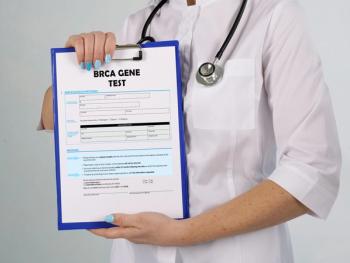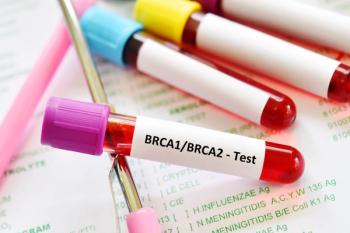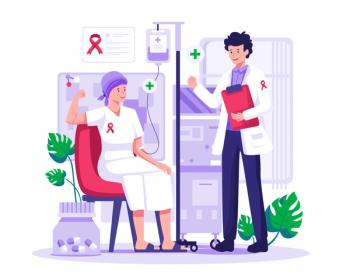
Breast Cancer
Latest News
Latest Videos

CME Content
More News

Dr. O’Shaughnessy discusses how she weighs clinical benefits against cost considerations in regards to selecting a CDK4/6 inhibitor.

A panel of experts discuss the variables of dosage and patient adherence in regards to managing toxicities from CDK4/6 inhibitors.

A medical expert navigates toxicity management in patients being treated with ribociclib.

Dr. Rugo details her management strategy in regards to GI toxicities.

Despite numerous trials, breast cancer immunotherapies have had a modest clinical impact, with only 2 approved drugs, highlighting inefficiencies in the clinical trial system.

Despite a significant increase in women with unilateral breast cancer who received a bilateral mastectomy, this study found no survival benefit compared with other treatment options. Although removing the unaffected breast reduces the risk of developing cancer in the other breast, results did not show decreased risk of death from breast cancer.

Study results suggest hormone therapy after breast cancer may lower dementia risk, particularly for younger Black women, but further research is needed to confirm these findings.

A remote monitoring app with alerts for doctors did not improve medication adherence in patients with breast cancer, but those receiving tailored text messages on top of monitoring saw reduced high-cost health care use.

Breast-conserving therapy for BRCA1/2 mutation carriers has higher risks of future breast cancers than the general population, but most patients avoid another cancer event, and many remain bilateral mastectomy–free after 20 years.

Dr. Dempsey details how different types of endocrine therapies have impacted toxicities within her patients.

A panel of experts compare the toxicity profiles of abemaciclib and ribociclib.

Early data suggest that BLU-222 combined with ribociclib and fulvestrant is safe and tolerable for patients with HR-positive and HER2-negative breast cancer, potentially overcoming resistance to CDK4/6 inhibitors.

The FDA approved SH-105 (Tepylute) prediluted injectable treatment for breast and ovarian cancers. This innovative formulation eliminates the need for complex powder reconstitution, improving safety and patient care.

Patients with stage I HER2-positive breast cancer treated with rastuzumab emtansine (T-DM1) had beneficial long-term outcomes with a 5-year disease-free survival rate of 97%, with the HER2DX score potentially identifying those at higher risk of recurrence.

A Swedish study suggests bariatric surgery may lower breast cancer risk in obese women, particularly those with high insulin levels at baseline.

This study highlights the lack of clear guidelines for breast cancer management in transgender men after chest contouring surgery. While data is limited, the authors suggest adapting existing recommendations for cisgender women and implementing risk management strategies like pre-surgery evaluation and education.

A recent study found that neighborhood deprivation is associated with higher breast cancer death rates for non-Hispanic White women, but not Black women. This suggests factors beyond socioeconomic status contribute to the racial disparity.

The use of a novel digital health platform achieved a 55% reduction in time to treatment among women with a new diagnosis of breast cancer.

Findings from ASCO 2024 suggest deruxtecan (T-DXd) may become a preferred first-line treatment for patients with hormone receptor (HR)-positive, HER2-low metastatic breast cancer that progressed after endocrine therapy.

Patients with breast cancer who participate in a tailored exercise program after surgery have better shoulder function after 1 month compared with those who received usual care.

A large US study showed population-based multigene testing might be a cost-effective way to identify women at risk for breast and ovarian cancer, potentially preventing more cases but raising concerns about generalizability and cost.

A US study found that a commercially available artificial intelligence (AI) algorithm for breast cancer screening produced more false-positives in Black patients and people with denser breasts, highlighting the importance of diverse datasets in training AI algorithms to reduce health care disparities.

Stephanie Graff, MD, concludes the discussion with thoughts on endocrine therapies in development for patients with ER+/HER2- metastatic breast cancer.

A large study finds that obesity and metabolic syndrome raise breast cancer mortality risk, but through different mechanisms. Metabolic syndrome is linked to a specific type of breast cancer, whereas obesity increases risk across all breast cancer subtypes.

A new study has linked racial and ethnic disparities with factors like age, income, and insurance to breast cancer treatment decline. Patients who received all treatments had better survival, highlighting the need for interventions to improve access and reduce disparities.























































